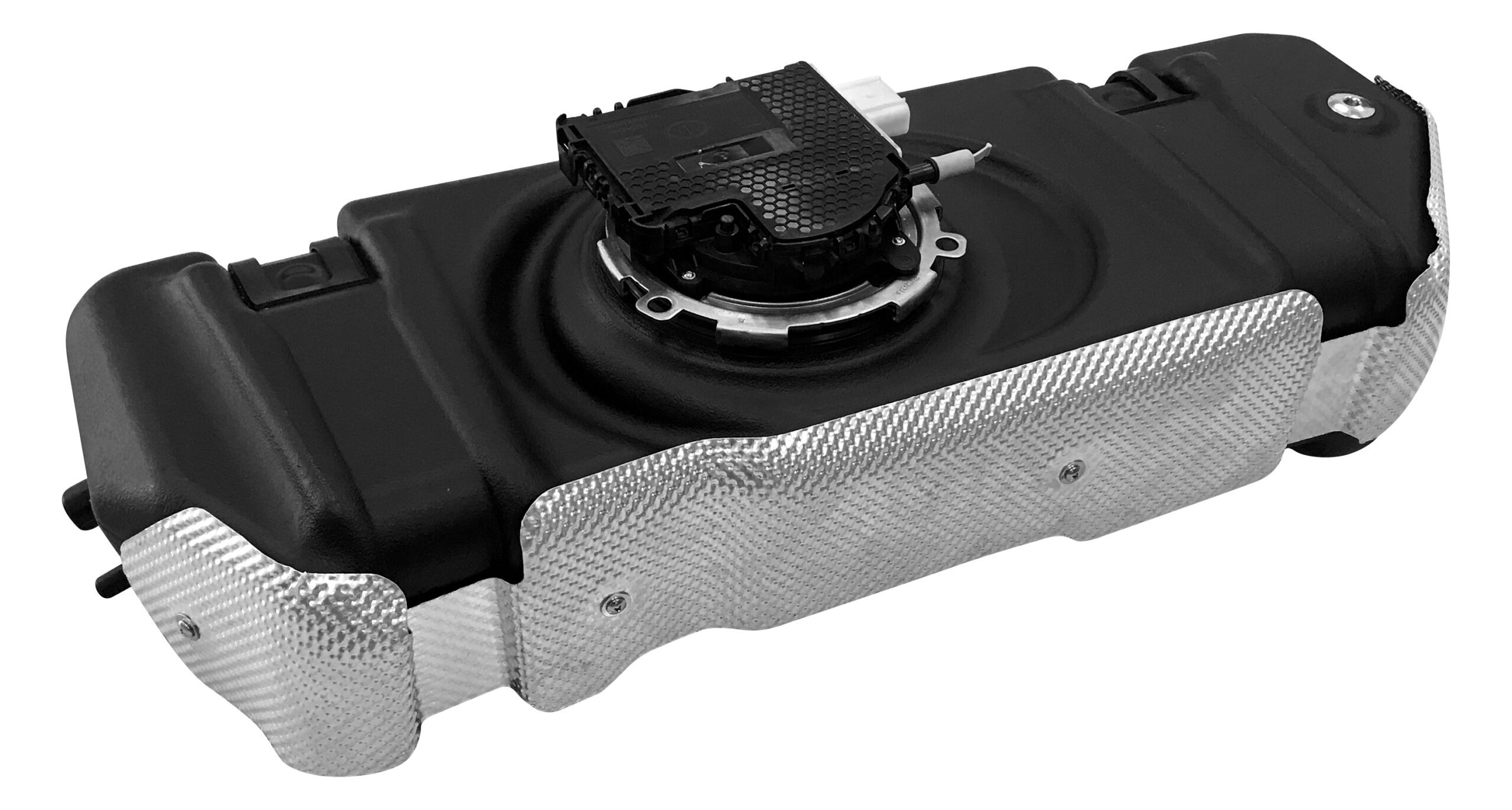Construction material is one of the most important things to consider when choosing a diesel exhaust fluid (DEF) tank. Stainless steel, medium-density polyethylene (MDPE) and high-density polyethylene (HDPE) are all popular options. In this article, we’ll compare these widely used DEF tank materials and explore why KUS HDPE DEF tanks are a top choice for vehicle manufacturers.
What Are the Most Common DEF Tank Materials?
Steel and polyethylene — a type of plastic — are two of the most common DEF tank materials. More specifically, DEF tank manufacturers rely on stainless steel, medium-density polyethylene (MDPE), or high-density polyethylene (HDPE) to make their products.
Benefits of MDPE and HDPE DEF Tanks
Compared to steel tanks, polyethylene tanks offer many advantages. The largest advantage is the price point. Plastic tanks are significantly more economical than stainless steel tanks, offering consumers a more affordable DEF tank option for purchase.
Another notable difference between stainless steel tanks and plastic tanks is impact resistance. Polyethylene tanks feature less vulnerable seam areas thanks to the rotomolding or blow molding process. HDPE tanks can also deform and rebound in an accident, unlike steel tanks which permanently deform or break along seams upon collision.
Another pro of high-density polyethylene DEF tanks is their moldability compared to metal tanks. The ability to form polyethylene into complex shapes offers engineers greater design flexibility for the internal structure of vehicles. In contrast, steel tanks are rigid, which means vehicle specs must also keep the incorporation of the tank in mind. This can introduce complications later in the manufacturing process if the tank is not properly accounted for during the design stages.
The final — and arguably most important — benefit of HDPE DEF tanks is their reduced weight. Polyethylene tanks are approximately 20% to 30% lighter than steel tanks on average, which can help tremendously with how many miles per gallon your vehicle gets. This makes compliance with federal regulations easier and allows automobile manufacturers to meet strict performance requirements for selling cars in the United States.
Benefits of Stainless Steel DEF Tanks
The primary reason for choosing a stainless steel DEF tank is customization within the context of a lower sales volume. In these scenarios, a stainless steel tank may offer a more economical choice for a consumer due to the fact that plastic tanks require a greater setup time for the molding process.
In addition to low sales volume, a stainless steel tank may be a better choice for very large DEF tanks. In many cases, these larger tanks cannot be made with plastics, leaving stainless steel tanks as the only viable option.

Why Does KUS Use High-Density Polyethylene for DEF Tanks?
HDPE is a very strong material that can withstand extreme temperatures and resist chemical and UV damage. This makes it an ideal choice for DEF tanks, which need to be able to withstand the harsh conditions found in industrial environments. HDPE tanks also require less maintenance than stainless steel tanks, as they do not need to be cleaned as frequently.
At KUS, we also choose high-density polyethylene for DEF tank production due to the increasing demand for customizable DEF tank options. Polyethylene tanks are also easier for our engineers to work with, especially when compared to steel tanks. This, combined with the fact that we manufacture the entire DEF tank assembly in-house, helps avoid delays caused by outsourcing.
Find The Best DEF Tank for Your Application
KUS is your source for exhaust aftertreatment products like DEF tanks and DEF level senders. We have more than a decade of experience designing custom DEF tanks and complete DEF tank assemblies for SCR system integrators and vehicle and engine OEMs. Along with our custom solutions, we also offer a full range of standard, ready-to-sell DEF tank assemblies ranging from 16L to 80L to meet your needs.
View our main DEF product offerings in our online shop or contact us for more information.
